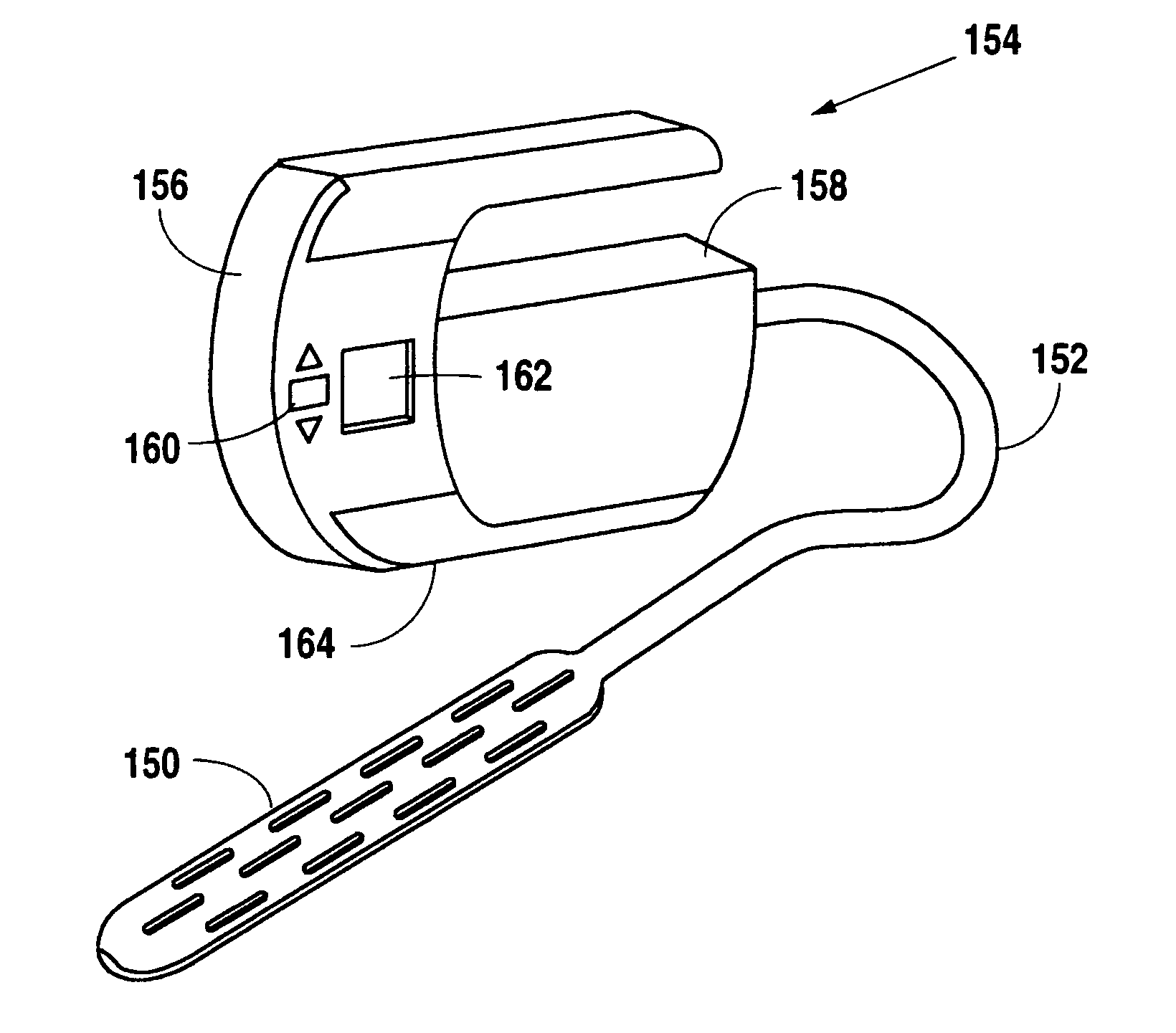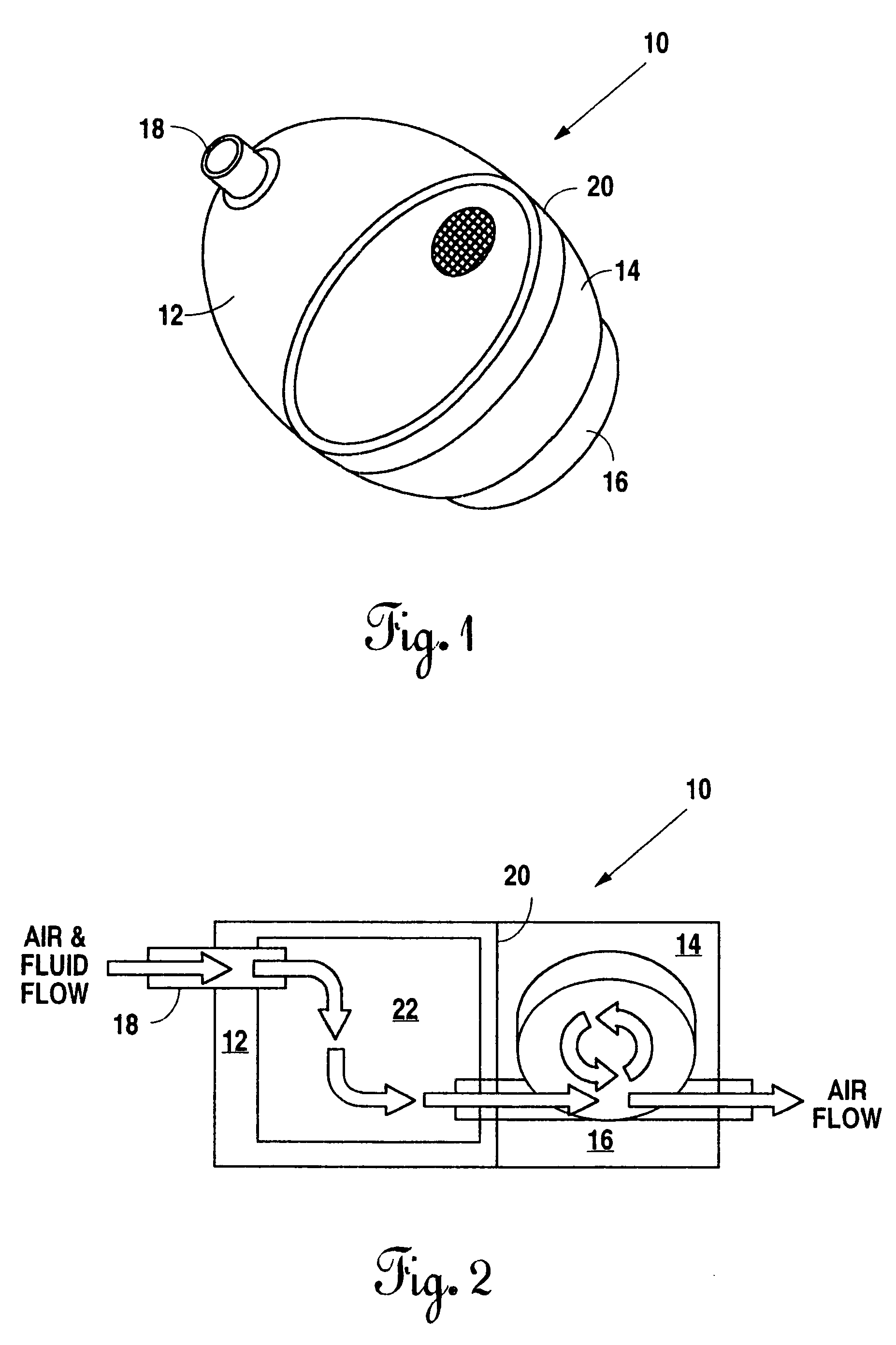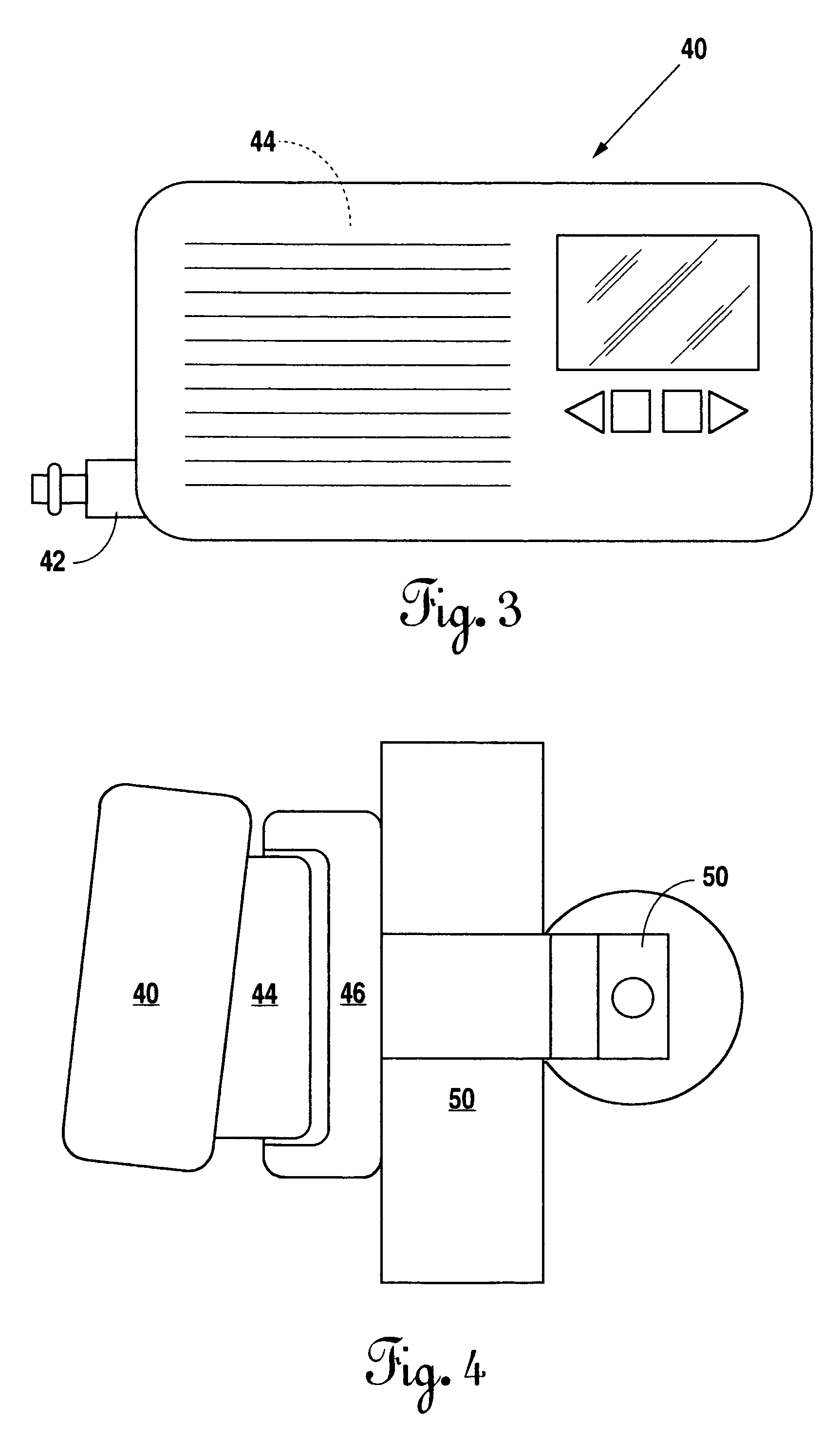Chest tube drainage system
a drainage system and chest tube technology, applied in the field of chest tube drainage system, can solve the problems of kinking of the tubing, insufficient air exchange for patients, and most difficult monitoring, and achieve the effect of facilitating the maintenance of a continuous flow of air
- Summary
- Abstract
- Description
- Claims
- Application Information
AI Technical Summary
Benefits of technology
Problems solved by technology
Method used
Image
Examples
first embodiment
[0041]the suction device of the present invention described above with respect to FIGS. 1 & 2 may be constructed small enough and of readily available materials and components as to allow the unit to be completely disposable (i.e. a single patient, single use device). The desiccant chamber section (12 in FIG. 1) may be replaced as needed for a particular patient while the entire device might be disposed of after use is completed for the particular patient.
[0042]The first embodiment of the suction device of the present invention described above may also find application in other medical situations not involving chest tube placement and drainage. The low vacuum device could, for example, be utilized as a very small wound pump to provide a sub-atmospheric pressure on a healing wound as has become beneficially evident in the wound treatment field. The airflow volume required for a chest tube pump would generally be higher, and the volume required for a wound pump generally lower. Variat...
second embodiment
[0043]the suction device of the present invention described above with respect to FIGS. 3 & 4 would be constructed in a manner similar to the device described in the referenced U.S. Pat. No. 6,648,862. In so far as the device described in this referenced U.S. Patent is primarily directed to the wound healing arts, the structure of a similar device appropriate for use with chest drainage would require modifications that would increase the airflow volume through the device and the capacity of the desiccant chamber. The desiccant material (contained within the desiccant pouch) and the chamber within which it is positioned, would be separately disposable apart from the motor / pump section and the power section of the device.
[0044]The device of this second embodiment would also lend itself to the use of more complex automated decision algorithms that may serve to control the airflow rates and respond to changes in pressure within the system. This increased electronic control complexity al...
PUM
 Login to View More
Login to View More Abstract
Description
Claims
Application Information
 Login to View More
Login to View More - R&D
- Intellectual Property
- Life Sciences
- Materials
- Tech Scout
- Unparalleled Data Quality
- Higher Quality Content
- 60% Fewer Hallucinations
Browse by: Latest US Patents, China's latest patents, Technical Efficacy Thesaurus, Application Domain, Technology Topic, Popular Technical Reports.
© 2025 PatSnap. All rights reserved.Legal|Privacy policy|Modern Slavery Act Transparency Statement|Sitemap|About US| Contact US: help@patsnap.com



